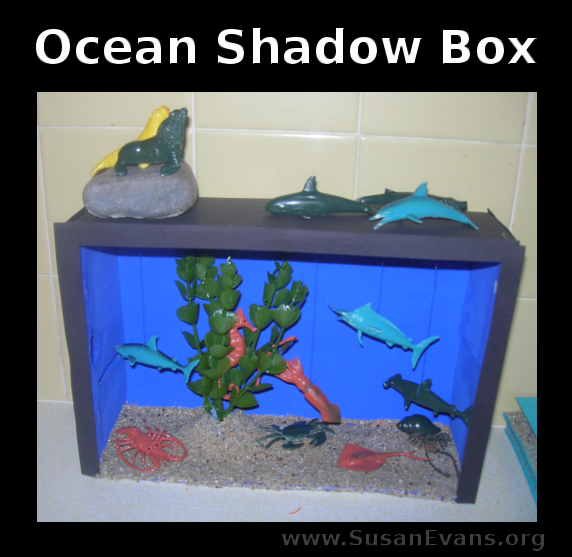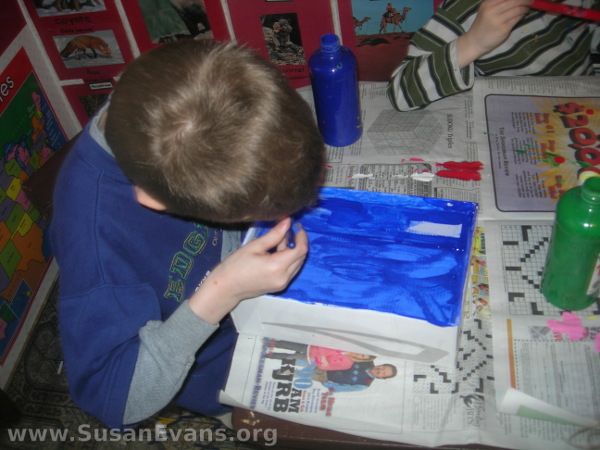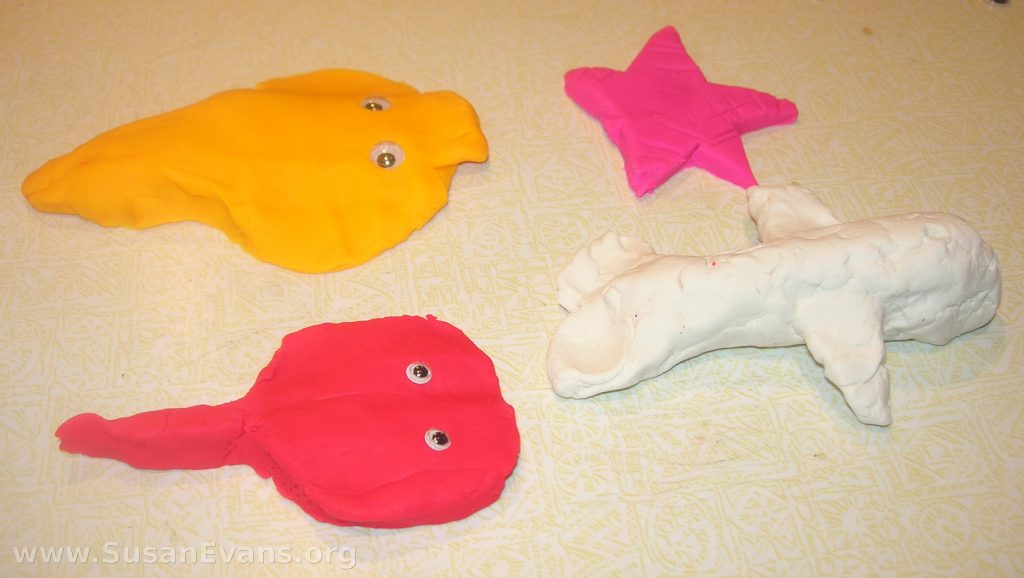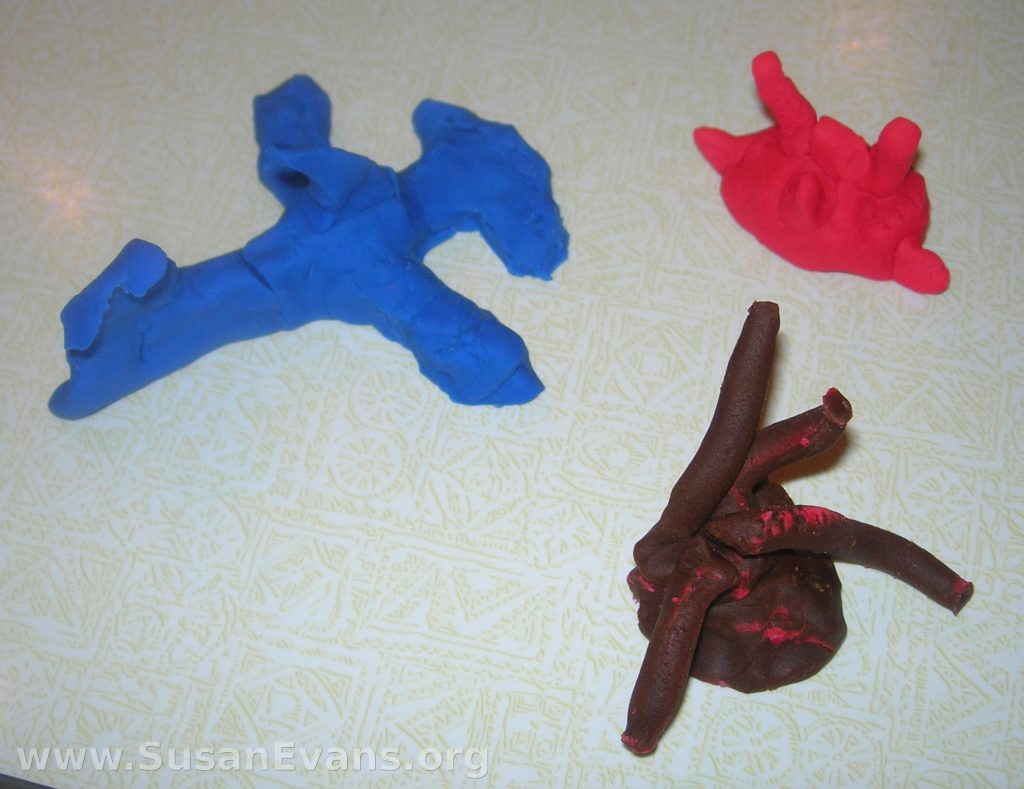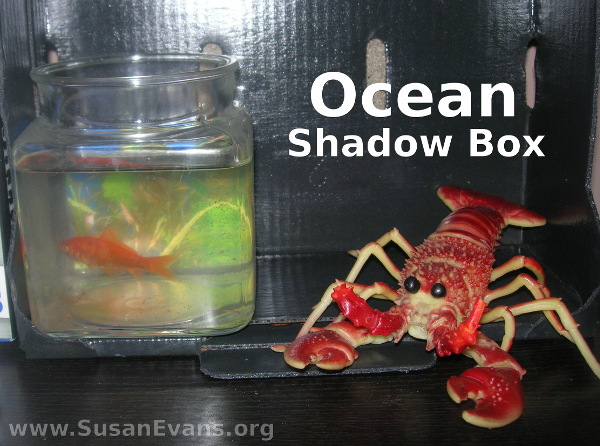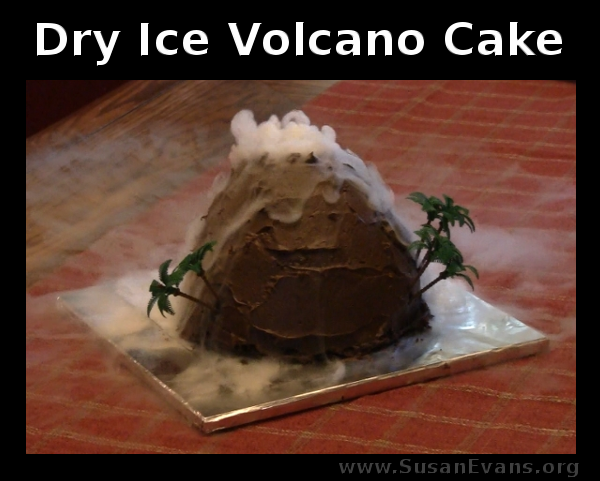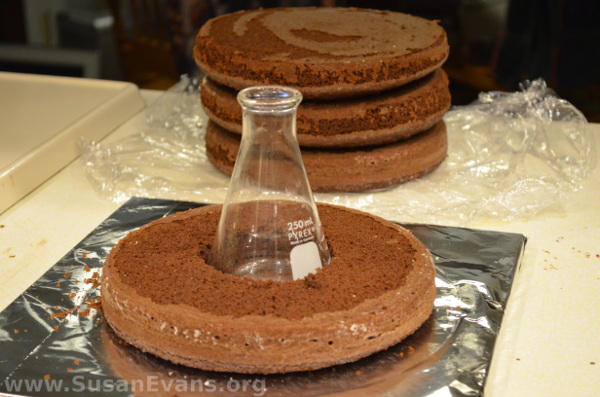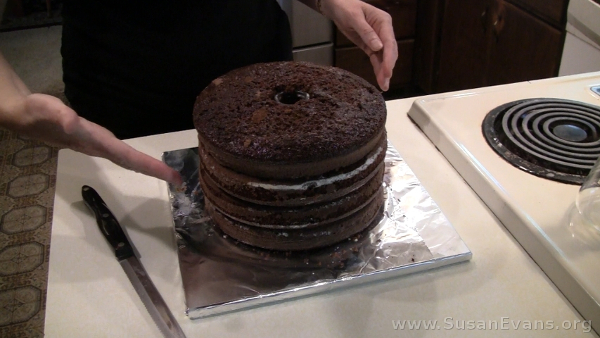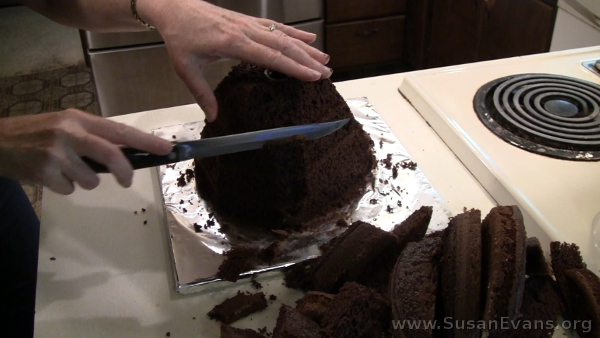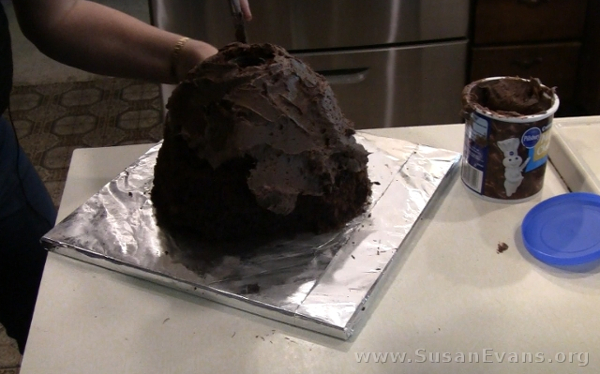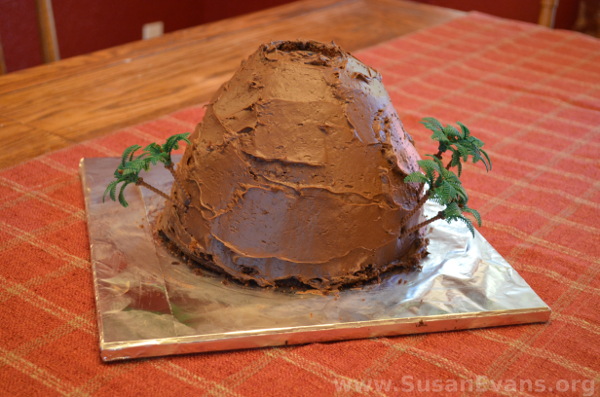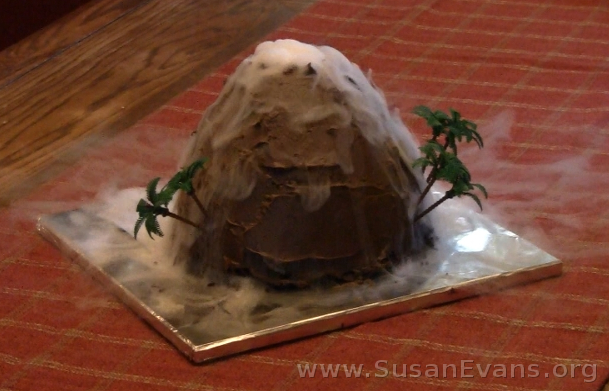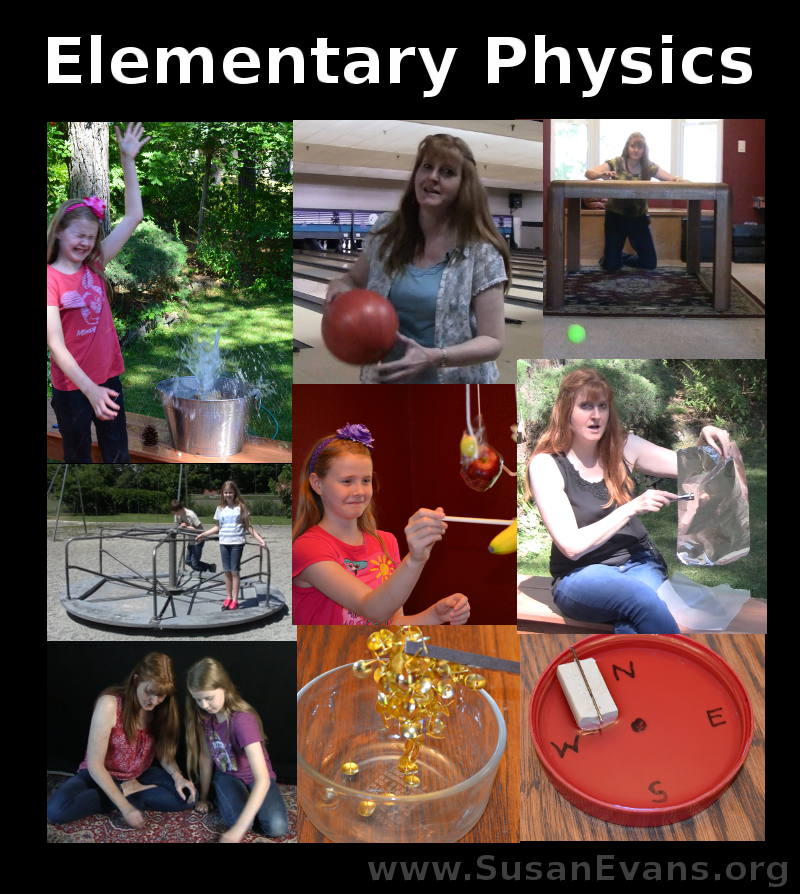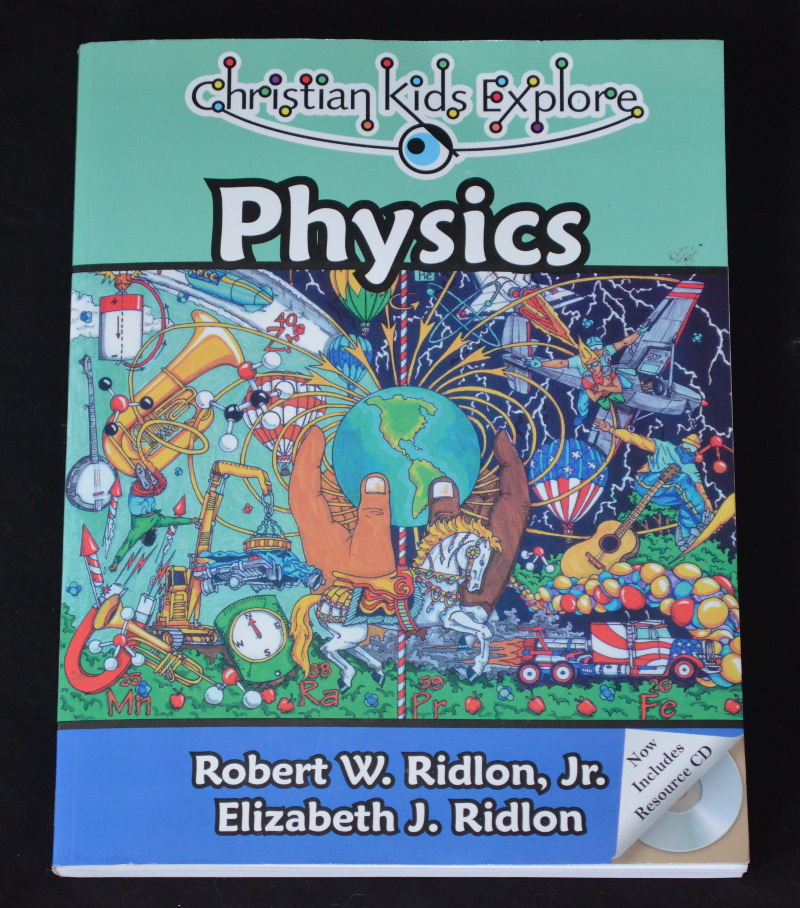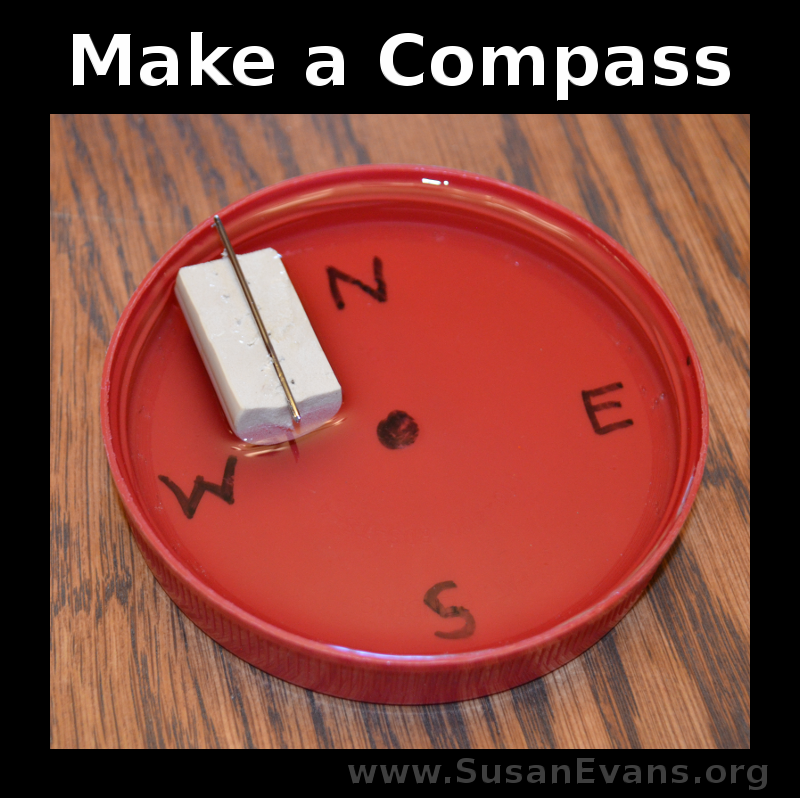If your kids are learning about underwater sea creatures, why not make an ocean shadow box? It is super easy and will re-enforce the children’s learning about ocean creatures.
The first thing you will want to do is paint the box blue. It helps if a shoe box is a plain white color on the inside. We taped black construction paper around the outside of the box, but you could paint that black if you want.
In other shadow boxes we’ve made, we have spray painted the entire shoe box black, both inside and out. This is a great backdrop for any scene. If you are creating sea creatures from the deep, it is appropriate for your water to be black, especially if you make a flashlight fish out of clay, and place an LED light inside!
Let the paint dry overnight, and then you will want to attach a plastic aquarium plant to the bottom of the box. Use clay to attach the plant to the box. (Make sure your shoe box is on its side when you decide where the ocean floor will be!)
Pour white school glue on the bottom of the scene, gluing around the plastic plant as well as the rest of the ocean floor. Pour sand on top of the glue and shake it off.
If you have some small plastic ocean creatures, you can hang them with white thread to the top of the box. I used strong packing tape, but you could also use duct tape.
We added a rock and some walruses to the top of the box, along with some dolphins splashing out of the water. (See the picture at the top of this post.)
You can also create ocean creatures out of clay. We make a manta ray, a hammerhead shark, a starfish, a whale, and an anemone. If you study and shape one sea creature per day, you can add to your collection. You can display your creatures on built-in cardboard shelves that you have painted blue or black to match your shadow box, hot gluing the shelf into place.
You can also make a simple ocean shadow box by spray painting a box black, adding a goldfish in a small fishbowl, and throwing seashells or any other ocean toys into the display.
